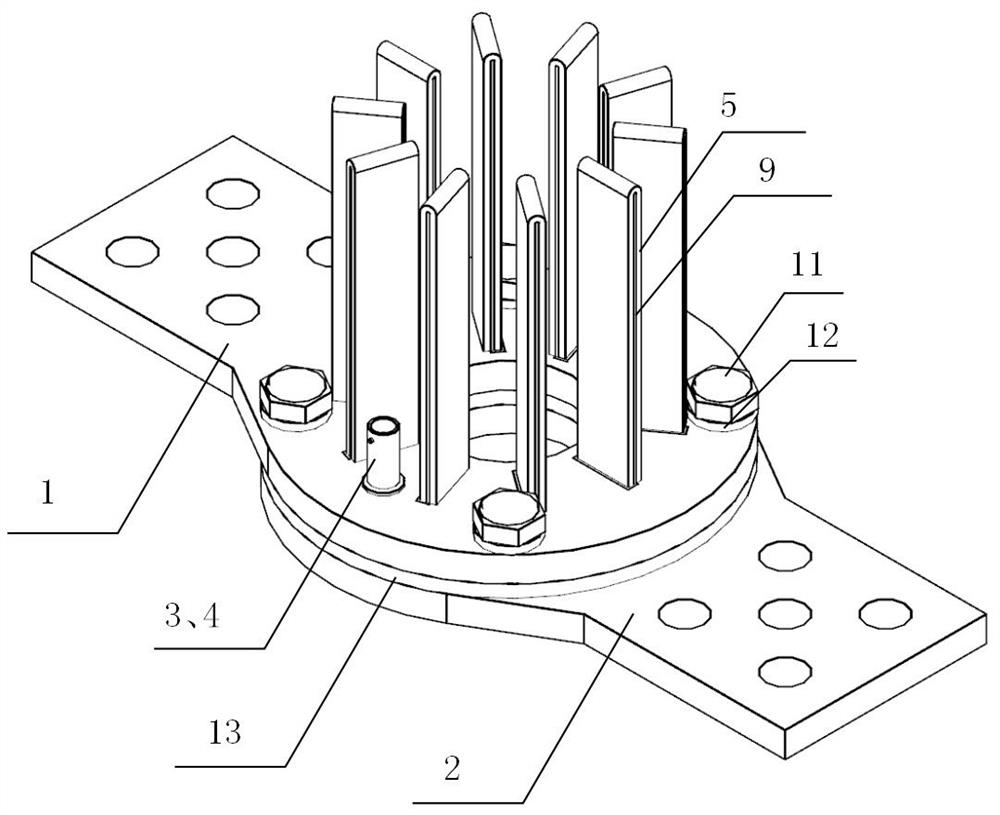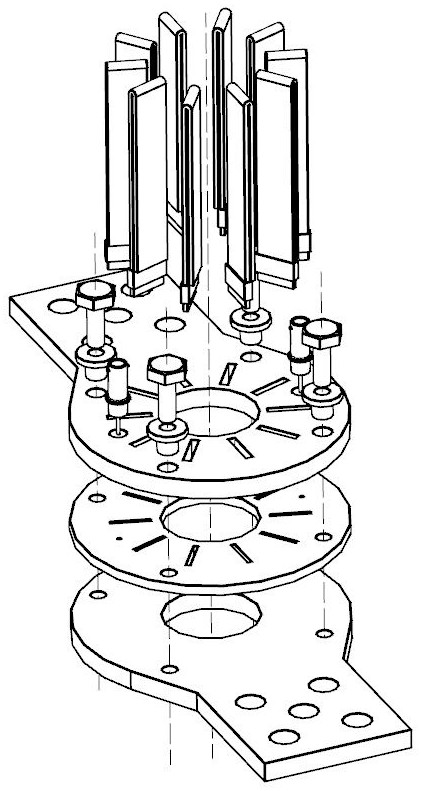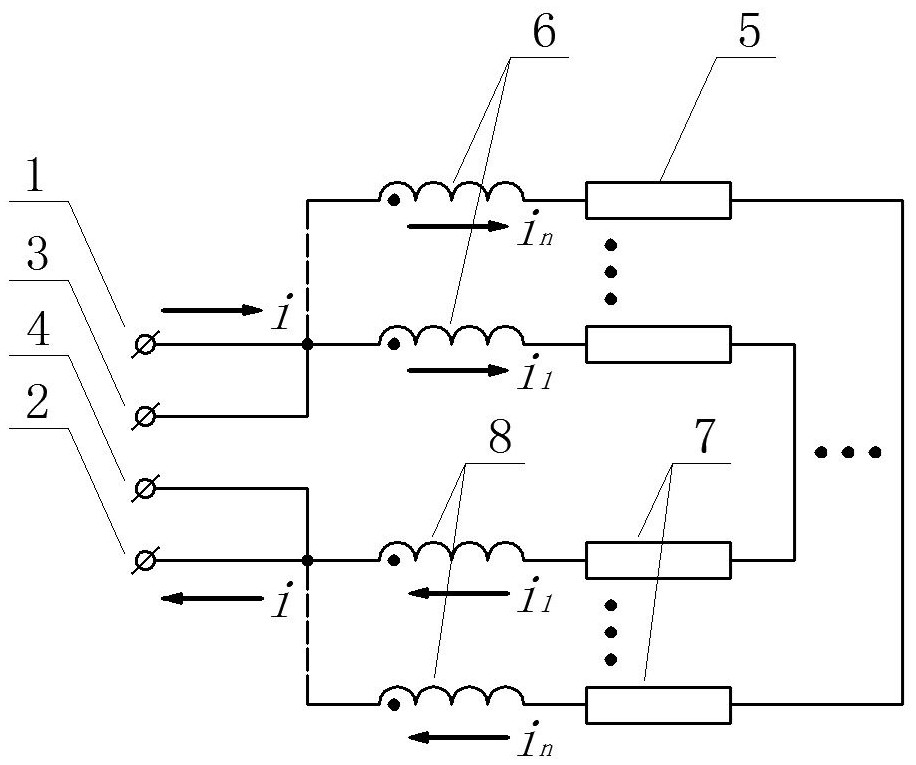Low residual inductance shunt for transient current measurement
A transient current and shunt technology, applied in the measurement of electrical variables, measurement devices, voltage/current isolation, etc., can solve the problems of lack of sensor assessment and equivalence verification, and reduce residual inductance and self-inductance components. The effect of reduction, length reduction
- Summary
- Abstract
- Description
- Claims
- Application Information
AI Technical Summary
Problems solved by technology
Method used
Image
Examples
Embodiment
[0018] The low residual inductance shunt used for transient current measurement provided by this embodiment, such as figure 1 with figure 2 As shown, it includes: a first current terminal 1, a second current terminal 2, a first voltage terminal 3, a second voltage terminal 4 and several shunt resistors; both the first current terminal 1 and the second current terminal 2 have protrusions on the edges The rings of the first current terminal 1 and the second current terminal 2 overlap, the protrusions face different directions, there are several openings with different shapes on the ring, and there are also several openings on the protrusions; the first current An insulating plate 13 is laid between the rings of the terminal 1 and the second current terminal 2 .
[0019] The shunt resistor is a resistor sheet folded into a U shape. The U-shaped opening faces the first current terminal 1. The shunt resistor is vertically installed and inserted into the first current terminal 1. ...
PUM
 Login to View More
Login to View More Abstract
Description
Claims
Application Information
 Login to View More
Login to View More - Generate Ideas
- Intellectual Property
- Life Sciences
- Materials
- Tech Scout
- Unparalleled Data Quality
- Higher Quality Content
- 60% Fewer Hallucinations
Browse by: Latest US Patents, China's latest patents, Technical Efficacy Thesaurus, Application Domain, Technology Topic, Popular Technical Reports.
© 2025 PatSnap. All rights reserved.Legal|Privacy policy|Modern Slavery Act Transparency Statement|Sitemap|About US| Contact US: help@patsnap.com



